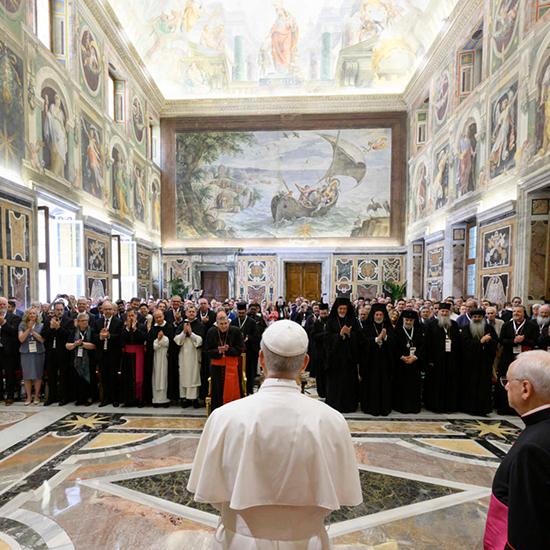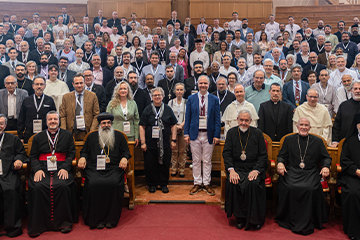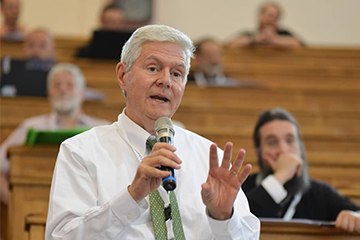Seaver College Faculty Present at Historic Nicaea Conference in Rome

Compelled by Jesus’ words in John 17:21—“that they all may be one”—the Nicaea and the Church of the Third Millennium conference gathered a global fellowship of nearly 318 clergy members, dignitaries, and academics from varying Christian traditions from June 4 to 7 to commemorate the original Council of Nicaea’s 1,700th anniversary.
 Conference attendees gathered with Pope Leo XIV (right)
Conference attendees gathered with Pope Leo XIV (right)
While fostering Catholic-Orthodox unity through honoring shared history, the Nicaea and the Church of the Third Millennium conference met in Rome, Italy, at the Vatican and Pontifical University of Saint Thomas Aquinas. Attendees included Pope Leo XIV and two Pepperdine professors: Paul Contino, Distinguished Professor of Great Books, and Dyron B. Daughrity, William S. Banowsky Chair in Religion and dean of the Religion and Philosophy Division, who presented research on the first Council of Nicaea.
“As a church historian, I was truly fortunate to share my research at an event celebrating the origins of the Nicene Creed in the company of such fellowship,” says Daughrity. “It is important for Christians, especially those involved with faith-based education, to recognize that our religious history is rooted in the events of the past—in this case the famous Council of Nicaea.”
The original Council of Nicaea was initiated in AD 325 by the Roman emperor Constantine, who ended Christian persecution within the Roman Empire after his own religious conversion. Gathering church leaders from across the empire, the council addressed theological questions of the day while establishing the Nicene Creed, which is still the most widely used confession of faith.
Daughrity’s research concentrates on the material qualities and locale of the original Council of Nicaea, held in modern-day İznik, Turkey. Although some opinions differ on the council’s precise location, Daughrity’s research supports the case that the council began at the “underwater basilica of Nicaea,” a collection of submerged fourth-century basilica ruins located within Lake İznik.
 Paul Contino speaking to conference participants.
Paul Contino speaking to conference participants.
“Recently, Christianity, especially Protestantism, has been responding to cultural relevancy by mimicking and mirroring a society around us that is secular,” says Daughrity. “But if we forget our ecclesiastical history, then we neglect our foundations. We must stay connected to our tradition’s history so that we maintain a deep and consistent understanding of the precious Christian faith we’ve inherited. We must care deeply about our holy Christian inheritance so that we don’t lose contact with it.”
Conference members attended a series of plenary addresses by leading theologians and participated in discussion forums. Contino chaired one such forum, a lively session on the concept of synodality, which derives from the Greek word synod meaning “journeying together.” Synodality is an approach to church communication that values collaborative decision-making by voicing shared discernment from the Holy Spirit, as opposed to solely relying on a top-down hierarchical system of governance.
On the morning of Saturday, June 7, Pope Leo XIV invited participants to the Clementine Hall in the Vatican, where he closed his address with a prayer for Christian unity drawn from the Eastern tradition.
“If Christians are to find our way toward the unity for which Jesus prayed on the night before his death, gatherings like this—in which we pray and seek the truth together—will be vital,” says Contino. “But as Pope Leo XIV reminded us: ‘The unity for which Christians long will not be primarily the fruit of our own efforts, nor will it be realized through any preconceived model or blueprint. Rather, unity will be a gift received as Christ wills and by the means that He wills . . . by the working of the Holy Spirit.’”